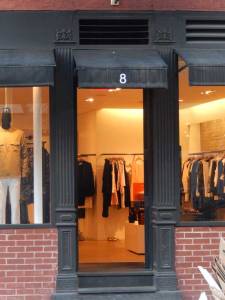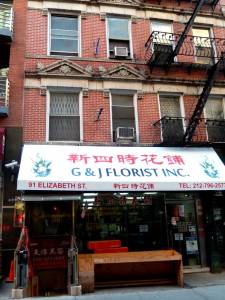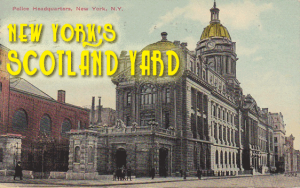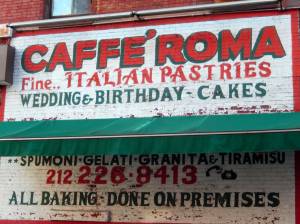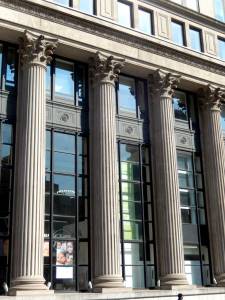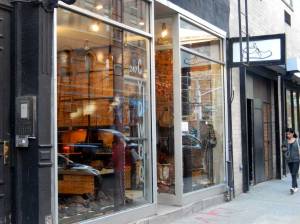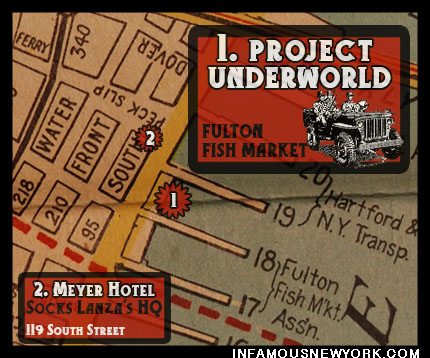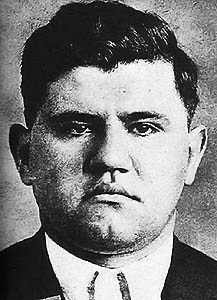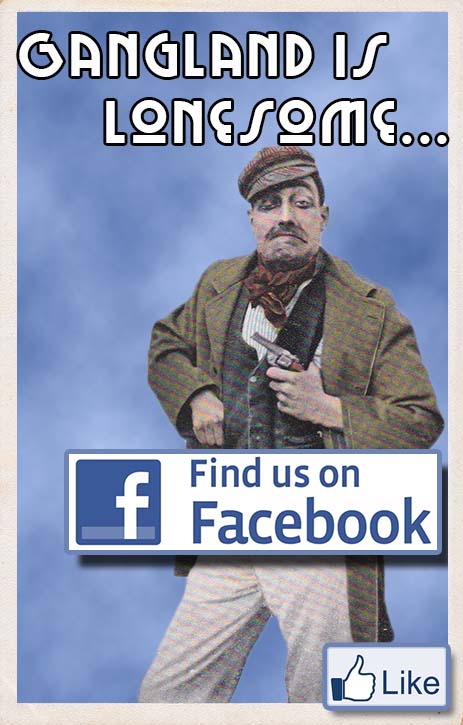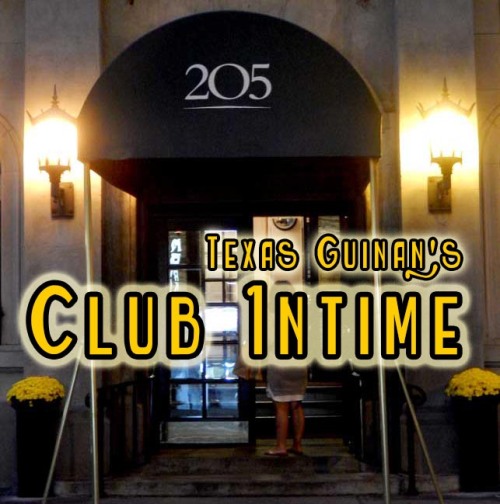
Address: 205 West 54th Street
Status: Standing (now Flute Bar)
It was the swingingest speakeasy of the roaring 20s. A partnership born out of the union of the fast talking queen of New York nightlife, Texas Guinan, and the real life Great Gatsby, Owney Madden, the duke Manhattan’s West Side. Their joint was the Club Intime, a lush cabaret dripping with wall-to-wall red velvet and hanging Chinese lanterns, an open secret hidden in the basement of the Hotel Harding on West 54th Street.
Owney The Killer Madden
The hotel represented the pinnacle of Owney Madden’s rags to riches story. A veritable Horatio Alger tale, Owney came up in the Irish slums of Hell’s Kitchen around the turn of the century. Owney ran with the Gophers, the most vicious mob ever to romp on the West Side. After being shot to pieces in a dancehall, Madden became the Gopher’s king but a murder conviction in 1915 put Owney on ice for the next nine years.

Oweny Madden was a gangland rags to riches story. We went from West Side tough to prohibition power broker.
Madden emerged from Sing Sing in 1923 penniless. Prohibition was in full swing and all of the Gophers had gone into bootlegging. His old pal Larry Fay made a fortune operating glitzy speaks and a fleet of white and purple taxi cabs, but Fay had problems, problems that a man of violence like Madden could solve. Waxey Gordon, Dutch Schultz and heavies from the other New York mobs were moving in on the pacifistic money making Fay. Owney became Fay’s partner, protecting their clubs with fists and bullets and bombs.
Fay and Madden grew wealthy beyond their wildest dreams. His beer, “Madden’s No. 1 Beer,” which he brewed on West 26th Street, became the gold standard of Jazz Age New York. Flush with cash, they ran an armada of rum runners, ferrying booze across the ocean that quenched the thrust of their speakeasies including the famed Cotton Club. However, the Hotel Harding and Club Intime would become the crown jewel of Madden’s empire.
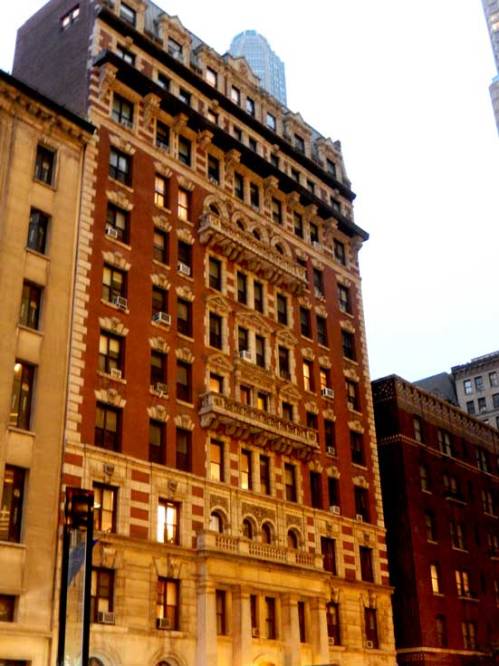
Owney Madden purchased the Hotel Harding to be the crown jewel of his underworld empire. Legs Diamond and Mae West lived in the hotel above Texas Guinan’s speakeasy, Club Intime.
Hello Suckers! Texas Guinan
Born Mary Louise Cecilia Guinan in Waco, Texas, everyone in New York called her Texas for her oversized persona and trademark greeting, “Hello Suckers!” Guinan could shoot and rope and ride with the skill of Tom Mix. She could belt out a show tune with a belly full of bathtub gin. Texas was larger than life and no one, including gangsters, politicians, or coppers could evade her ascorbic zingers.
In her short career, Texas was a vaudevillian, a silent movie star, and New York City’s greatest prohibition emcee. The gangsters loved her, especially Larry Fay, because she ran the most lucrative clubs in town, taking arrests like a hard nosed hood. Together the duo ran a string of clubs all over Broadway. The El Fay, the 300 Club, and Texas Guinan’s, bouncing from club to club as the authorities raided and padlocked their nightclubs, but eventually Fay and Guinan would come to rest at Madden’s Harding Hotel, with Texas headlining.
Madden Acquires The Hotel Harding
Built in 1903, The twelve floor Hotel Harding stood in an important crossroads situated in the heart of the Times Square speakeasy district. Always a shadowy figure, Madden acquired the Harding using Max and Tilly Landauer as fronts to purchase the hotel. Within months, the swank building was packed with showgirls, actresses, playwrights, gangsters, boxers and associated high-end riff raff. Legs Diamond lived upstairs in the Harding, providing freelance guns for hire for Madden’s mob. The boxer Kid Berg, and Madden’s latest infatuation, an actress named Mae West, also called the Harding home.
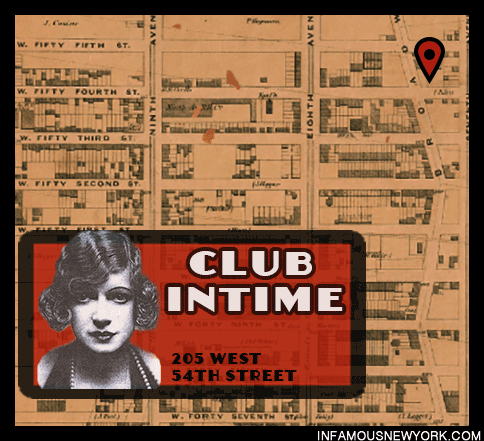
Owney Madden and Texas Guinan owned the Club Intime located at 205 West 54th Street inside of Madden’s posh Hotel Harding. In the 1930’s Dutch Schultz acquired the club and renamed it the Club Abby.
“So Sweet and So Vicious,” Mae West and Owney Madden
Although it’s pure speculation, Owney Madden probably fell in love with Mae West during her 1916 White Rats benefit in Sing Sing. In those days, Madden was nothing more than a small time hood with a chest full of bullets and a hacking, bloody cough. However, Madden and Mae would soon be together again. In 1928 after Madden acquired the Hotel, Mae and her mother were some of his first residents. Texas Guinan and Mae held a seance there in which Ethel Barrymore and Heywood Broun helped conjure the spirits of Rudolph Valentino and Arnold Rothstein.
A love affair soon blossomed in the Harding Hotel. Mae affectionately nicknamed madden “her clay pigeon” for all of the bullets in his chest, later saying he was “so sweet and so vicious.” Madden invested in her plays and backed the actress when the cops jailed Mae for her risque show, Sex. The gangster’s connections with Blackwell’s Island warden earned Mae a private cell and silk underwear. Mae was of course a regular at the Club Intime downstairs.
The Hullabaloo of Broadway: Club Intime
When Guinan and Madden opened the Club Intime the suckers came by the boatload. Crooked politicians, actors, writers, stock brokers and mobster moguls all fought for the chance to pay an unfathomable $25 cover charge and the right to be zinged by Tex.
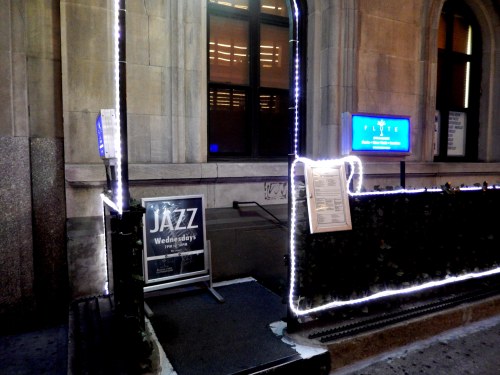
Texas Guinan’s speakeasy, Club Intime, was located beneath 205 West 54th Street. It is now Flute Bar.
Once inside inside the lush speakeasy, “the suckers” were greeted by Guiana’s troupe of scantily clad fan dancers and the chance to empty their bankrolls on $5 drinks and $35 bottles of erstaz champagne of dubious vintage.
On the postage stamp sized dance floor, playwrights, Broadway crooners, top shelf gangsters, and half naked chorus girls danced the night away. Oweny’s childhood best friend, Broadway dancer and future Hollywood actor, George Raft, could be seen cutting a rug with Legs Diamond and Dutch Schultz. Club Intime was trailblazing cabaret, a sign of the future, a harbinger of the sexual revolution, utterly modern and utterly American. Of course the coppers wanted it closed. In April of 1929, Police Commissioner Grover Whalen raided the club for operating an unlicensed cabaret. According to the Brooklyn Daily Eagle:
“Texas Guinan’s Club Intime was Evicted from the Hotel Harding, 203 W. 54th Street Yesterday… Kennedy and his assistants piled the pianos, chairs, tables, draperies and other furnishings on the sidewalk…” The Brooklyn Daily Eagle, 1929
The eviction was for show, however, Guinan and Madden simply sold the club to Dutch Schultz and within days the club had morphed into an even more decadent establishment, the Club Abby.
Club Abby: Dutch Schultz, Gene Malin and the Pansy Craze
Quickly after the demise of Club Intime, the Club Abby sprouted up in its place, this time with another emcee- Gene Malin, Broadway’s first openly gay drag performer. By the 1930s, Pansy bars were all the rage and gangsters and homosexuals rubbed shoulders in the ultimate sign of social defiance.
The Abby’s tenure at the Harding hotel was short lived, however, and gunplay would bring about the end of an era.
Dutch Schultz Gets Blasted
On January 24, 1931 all hell broke loose in the Club Abby when the Dutch Schultz and Waxey Gordon mobs collided. While waltzing on the dance floor the two gangs began arguing over a female companion. Suddenly, Schultz and Waxey’s lieutenant Charles Chink Sherman exchanged punches on the crowded dance floor. Sherman landed multiple punches, staggering the Dutchman, causing Schultz to ram a broken beer bottle into Sherman’s face. The Waxey Gordon mob pulled guns and pumped lead into Dutch, but his bulletproof vest saved his hide, leaving him with a shoulder wound. Because of the wild affray, the police closed the basement speakeasy for good.


